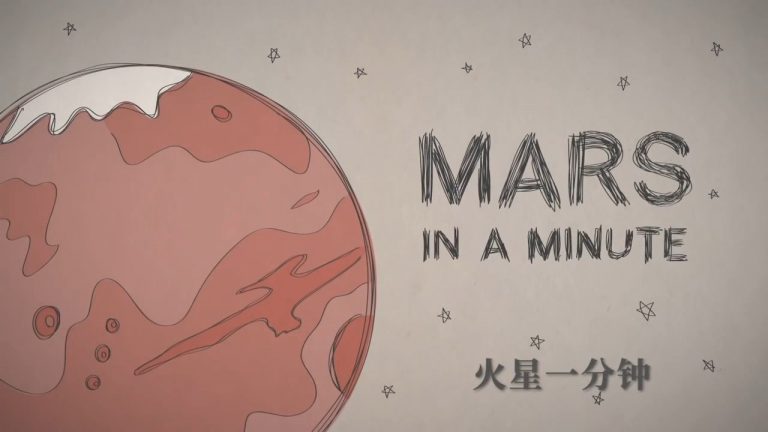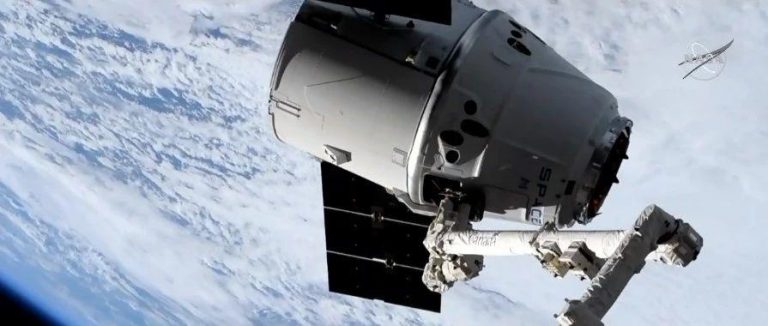天文学家使用NASA哈勃太空望远镜16年的观测,将最大、最全面的星系“史书”整理成一幅图像。 深空马赛克(deep-sky mosaic)拼接图由近7500个曝光图像组成,为宇宙描绘了一幅画像。图中包含265000个星系,可以追溯到133亿年前 (即大爆炸后的5亿年),其中最暗、最远的星系只有人眼可见亮度的十亿分之一。宇宙的演化史也记录其中:它展示了星系如何随着时间而变化,如何成为附近宇宙中看到的巨大星系。 这张哈勃太空望远镜图像代表了哈勃遗产场(Hubble Legacy Field)的一部分,这是迄今为止宇宙最广阔的视图之一。该图像由数千张快照的组成,集聚了十六年的观测结果。哈勃遗产场结合了哈勃深场(Hubble deep-field)以及极端深场(eXtreme Deep Field,XDF)的几次观测。波长范围从紫外(ultraviolet)延伸到近红外(near-infrared),随着时间推移捕捉星系的关键特征。图像展示了遥远宇宙的宽幅画像,包含大约200000个星系,它们的演化从宇宙大爆炸后的5亿年延续至今(宇宙年龄138亿年)。 Credits: NASA, ESA, G. Illingworth and D. Magee (University of California, Santa Cruz), K. Whitaker (University of Connecticut), R. Bouwens (Leiden University), P. Oesch (University of Geneva) and the Hubble Legacy Field team [rml_read_more] “现在我们已经比以前巡天(survey)的范围更广,我们正在哈勃有史以来最大的数据集中收集更多遥远的星系,”组建图像团队的领导者、加州大学圣克鲁兹分校的Garth Illingworth说道, “这一幅图像包含了宇宙中星系生长的完整历史,讲述它们从’婴儿’长到’成年人’的过程。” 在未来的太空望远镜发射之前,这个图像是无法超越的。Illingworth补充道:“我们将这种马赛克拼接图作为天文学家们使用的工具。我们期望它带来对未来几年宇宙的演变更连贯、更深入、更透彻的理解。” 该图像产出了一个遥远星系的大目录。“这个目录中,很多星系具有精确的高分辨率测量,这使我们能够进行大范围的河外(extragalactic,银河系外)研究,”该目录的首席研究员、康涅狄格大学的Katherine Whitaker说,“通常,这类巡天带来了意想不到的发现,这些发现极大程度上影响了我们对星系演化的理解。” 视频以哈勃超深场(Hubble Ultra Deep Field)中成千上万个星系的开始,慢慢缩小以显示更大的哈勃遗产场(包含265000个星系)。 Credits: NASA, ESA, G. Illingworth (University of California, Santa Cruz) and G. Bacon (STScI) 正如天文学家Edwin Hubble曾在一个世纪前所描述的那样,星系是“宇宙的标记”。星系使得天文学家追踪宇宙的膨胀、提供宇宙基础物理学的线索、显示化学元素的起源、并使我们的太阳系和生命的出现成为可能。 这个更广阔的视图包含的星系数量是之前深场的30倍。新的肖像是由多个快照构成的马赛克拼接图,角大小几乎覆盖了满月的宽度,而极端深场的覆盖范围不到满月直径的十分之一。遗产场还发现了星系间相互作用的痕迹,这是宇宙早期年轻星系与其他星系相撞、合并而产生的。 上图将天哈勃遗产场与月球的角直径(angular diameter)进行比较。哈勃遗产场是宇宙视图中最广阔的之一,近7500个曝光构成的马赛克拼接图几乎覆盖了月球在天上的大小。月球在天空上对应一个半度的角(就是当你伸直手臂对向天空时食指宽度的一半)。 Credits: Hubble Legacy Field Image: NASA, ESA, and G. Illingworth and D. Magee (University of California, Santa Cruz); Moon Image: NASA, Goddard Space Flight Center and Arizona State University 集合所有观察结果是一项艰巨的任务,该图像是31个天文学家团队集体创作的结果。哈勃在这个小区域花费的时间比在任何其他天空区域都多,总计超过250天。 “我们的目标是将十六年间所有的曝光组合成一张图像,”该团队的数据处理负责人、加州大学圣克鲁兹分校的Dan Magee解释说,“之前,大多数曝光并没有以一致的方式组合在一起,使其有用于研究人员。天文学家可以选择并立即使用他们想要的数据,而不是在进行科学分析之前执行大量的数据简化。“ 通过Mikulski太空望远镜档案馆(Mikulski Archive for Space Telescopes,MAST),全球天文界可以使用该图像以及其构成的各个曝光。MAST是哈勃和其他NASA任务的天文数据在线数据库,位于马里兰州巴尔的摩的太空望远镜科学研究所。 为了在遥远的宇宙中采集更深入的“核心样本”,哈勃太空望远镜已经走过了漫长的道路。在哈勃于1990年发射之后,天文学家们一度争论,是否值得花费大量望远镜时间去长时间曝光一片看似“空无一物”的小天空。由此产生的哈勃深场图像在1995年捕获了数千个看不见的星系。大胆的努力是一个具有里程碑意义的示范和典型的概念验证,为未来的深场图像奠定了基础。2002年,哈勃望远镜的高级巡天相机甚至更深入地发现了一个快照中的10000个星系。天文学家使用了2009年安装在哈勃望远镜上宽视场相机3(WFC3)拍摄的照片,以便组装2012年极端深场的快照。与之前的相机相比,WFC3涵盖了更广的波长范围(从紫外到近红外)。 这个新的图像拼接是哈勃遗产场图像系列中的第一个。该团队正在制作第二组图像,在另一个天空区域,总共超过5200个曝光。在未来,天文学家希望扩大图像中的多波长范围,包括波长更长的红外数据以及斯皮策太空望远镜(Spitzer Space Telescope)和钱德拉X射线天文台(Chandra X-ray Observatory)的高能X射线观测(NASA的其他两个大天文台)。 遗产场图像中的大量星系也是未来望远镜的主要目标。“这将为NASA计划的宽场红外探测望远镜(Wide Field Infrared Survey Telescope,WFIRST)奠定基础,”Illingworth说,“遗产场是WFIRST的探路者,它将捕获比典型哈勃图像大100倍的图像。在WFIRST三周的观测时间内,天文学家将能够集合一个更深场的图像,是哈勃遗产场大小的两倍多。“ 此外,NASA即将升空的詹姆斯韦伯太空望远镜(James Webb Space Telescope)将使天文学家能够更深入地探索遗产场,以揭示星系的成长。韦伯的红外线覆盖范围将超出哈勃和斯皮策,这将帮助天文学家识别宇宙中的第一个星系。…










